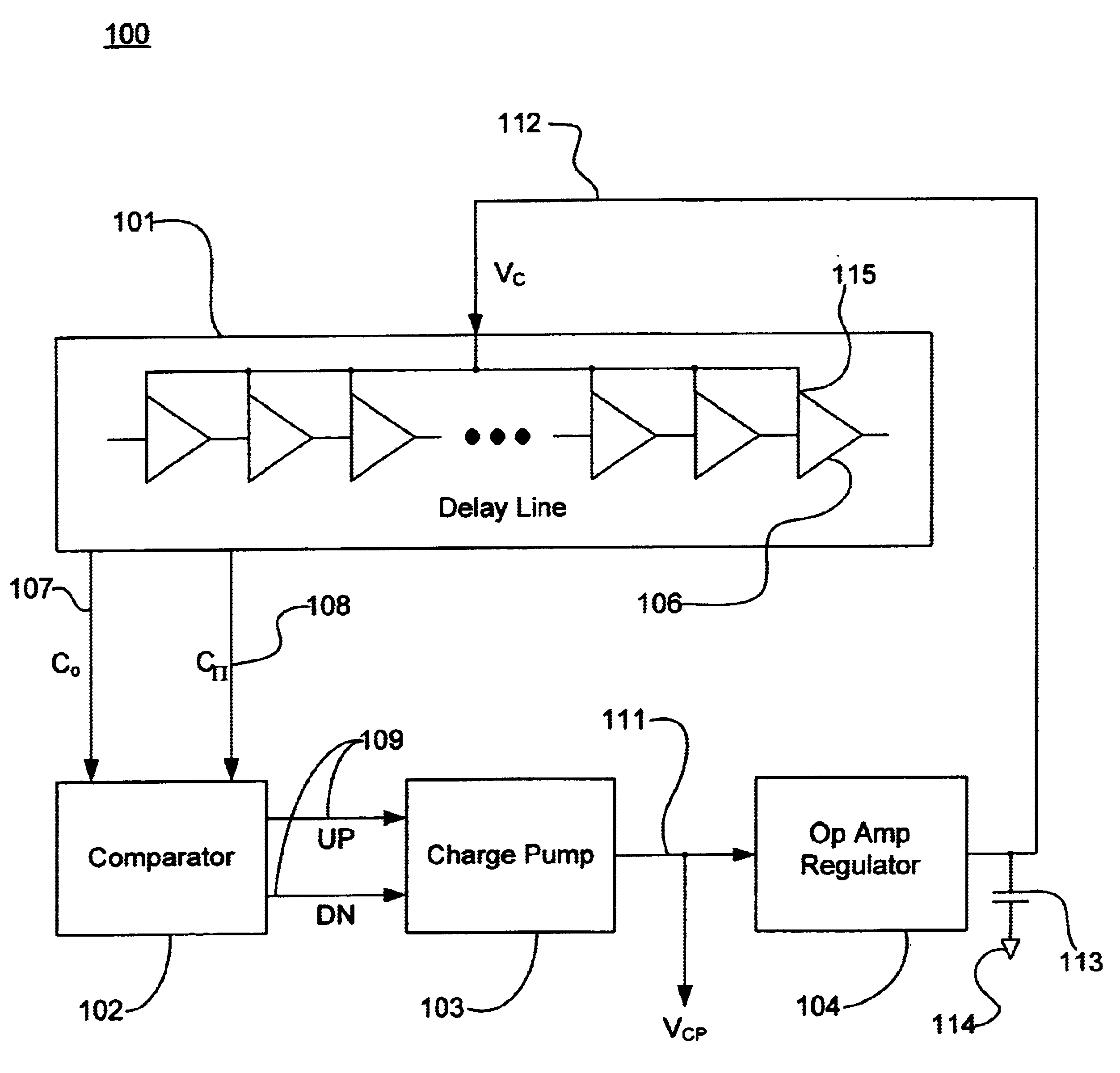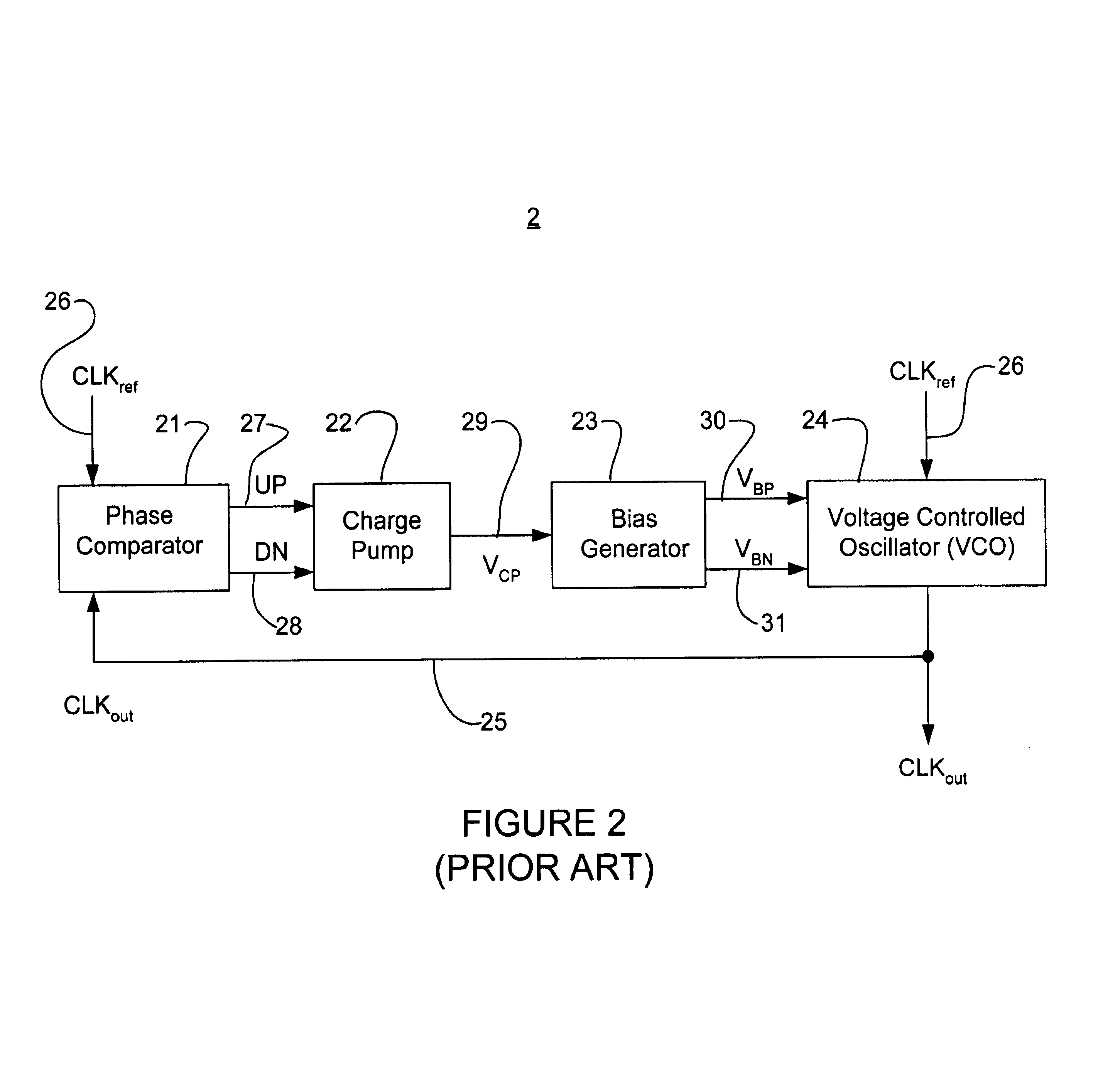Clock alignment circuit having a self regulating voltage supply
a clock alignment and voltage supply technology, applied in the field of clock alignment circuits and techniques, can solve the problems of noisy power supply, power supply noise may also introduce, power supply noise can be reduced, so as to reduce power dissipation and increase power supply noise immunity. , the effect of widening the operating rang
- Summary
- Abstract
- Description
- Claims
- Application Information
AI Technical Summary
Benefits of technology
Problems solved by technology
Method used
Image
Examples
Embodiment Construction
[0039]The present invention is a clock alignment circuit and technique for generating a clock signal having a defined, synchronous and / or predetermined timing relationship with respect to a reference clock signal (for example, the clock signal may be delay synchronized with the reference signal such that there is little to no delay error between the clock signal and reference clock signal or the clock signal may be frequency synchronized such that there is little to no, or negligible, phase error between the clock signal and reference clock signal). The clock alignment circuitry (or clock compensation circuitry) and technique of the present invention employs circuits and techniques to regulate the power supply voltage while providing significant immunity to power supply noise or other noise sources.
[0040]In one embodiment, a power supply circuit of the present invention is included in a feedback system of the clock alignment circuit. The power supply circuit includes an operational ...
PUM
 Login to View More
Login to View More Abstract
Description
Claims
Application Information
 Login to View More
Login to View More - R&D
- Intellectual Property
- Life Sciences
- Materials
- Tech Scout
- Unparalleled Data Quality
- Higher Quality Content
- 60% Fewer Hallucinations
Browse by: Latest US Patents, China's latest patents, Technical Efficacy Thesaurus, Application Domain, Technology Topic, Popular Technical Reports.
© 2025 PatSnap. All rights reserved.Legal|Privacy policy|Modern Slavery Act Transparency Statement|Sitemap|About US| Contact US: help@patsnap.com



